랙 마운트는 어떻게 작동합니까??
IT 옷장이나 데이터 센터를 들여다 보면서 모든 복잡한 장비를 얼마나 깔끔하게 곤경에 빠뜨린 적이 있습니까?, 네트워크 스위치, 전력 공급 장치 - 조직이 구성되어 있습니다? 아니면 "랙 마운트 배터리와 같은 강력한 에너지 저장 솔루션을 찾고있을 것입니다." 이 효율적인 시스템에 어떻게 적합한 지 궁금합니다. 이 조직의 마법은입니다 랙 마운트 시스템, 엄청난 이점을 제공하는 표준화 된 접근 방식.
랙 장착은 표준화 된 19 인치 너비의 프레임을 사용하여 작동합니다. (장비 랙) 수직 장착 레일이 장착되어 있습니다. 랙 장착을 위해 특별히 설계된 장비, 서버와 같은, 네트워크 장비, 또는 현대적인 "랙 마운트 배터리," 전면 패널도 있습니다 19 장착 구멍이있는 인치. 그런 다음이 장치는 나사를 사용하여 레일에 고정되며 종종 랙으로 미끄러 져 체중을 견딜 수 있습니다.. 이 시스템은 밀도가 높습니다, 조직, 중요한 부품의 접근 가능한 하우징, 표준화 된 "u" 단위.
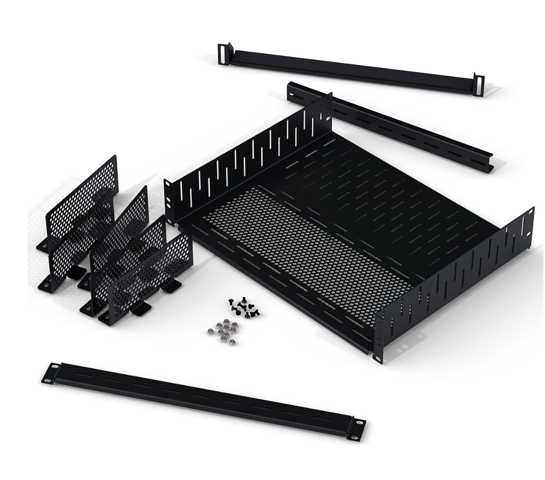
~에 Gycx 솔라, 우리는 자주 랙 마운트 솔루션을 사용합니다, 특히 확장 가능한 리튬 철 포스페이트를 위해 (LFP) 배터리 시스템. 랙 장착이 어떻게 작동하는지 이해하면 효율성을 높이 평가하는 데 도움이됩니다, 안전, 그리고 모듈성은 복잡한 설정에 가져옵니다, 고급 태양 에너지 저장을 포함하여. 이 시스템을 더 자세히 살펴 보겠습니다.
서버 랙 배터리는 무엇입니까??
랙 장착에 대해 들었습니다, 그리고 이제 "서버 랙 배터리." 정기적 인 배터리가 선반에 놓여 있습니다, 아니면 더 전문화 된 것입니다? 현대 에너지 저장에 대해 이야기 할 때, 서버 랙 배터리는 실제로 제작 된 솔루션입니다.
서버 랙 배터리는 리튬 이온 배터리 모듈입니다, 가장 일반적으로 리튬 철 포스페이트를 사용합니다 (LFP) 우수한 안전과 긴 사이클 수명을위한 화학, 표준 19 인치 장비 랙에 맞도록 특별히 설계되었습니다. 그들은 모듈 식입니다, 종종 "스택을 할 수 있음을 의미합니다" 또는 에너지 저장 용량을 확장하기 위해 여러 장치를 설치하십시오.. 각 모듈에는 일반적으로 자체 통합 배터리 관리 시스템이 포함됩니다. (비엠에스) 보호 및 모니터링을 위해, 그리고 그들은 태양 에너지 저장과 같은 응용 분야를위한 매우 우주 효율적이고 구성된 솔루션을 제공합니다., 백업 전원 시스템, 그리고 그리드 에너지 독립성.
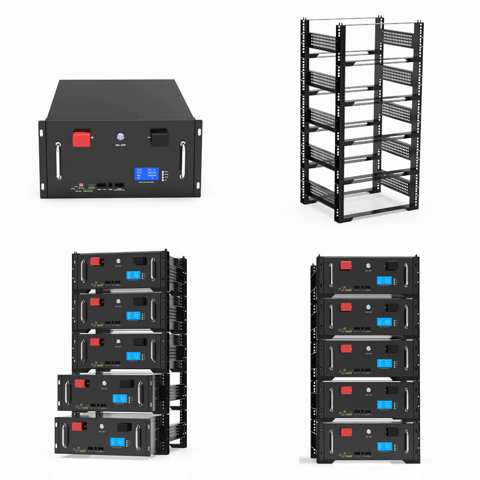
더 깊이 다이빙하십시오: 랙 마운트 배터리의 해부학
서버 랙 배터리는 랙이있는 환경 내에서 성능 및 통합을 위해 엔지니어링됩니다.:
- 표준화 된 폼 팩터: 그들은 19 인치 너비 표준을 준수합니다, 서버와 동일한 랙에 설치할 수 있습니다., 네트워크 스위치, UPS 유닛. 그들의 높이는 "u" 단위 (1u = 1.75 신장), 일반적으로 모듈 당 2U ~ 5U 범위입니다.
- LFP 화학 (일반적으로): GYCX Solar에서 우리가 자주 고정 저장을 강조하는 것처럼, LFP (Lifepo₄) 고유 한 안전으로 인한 화학입니다 (높은 열 안정성, 열 런 어웨이가 덜 발생합니다), 매우 긴 사이클 수명 (수천 개의 전하/방전주기), 코발트가 포함되어 있지 않기 때문입니다, 윤리적 인 소싱 문제를 해결합니다.
- 모듈성 및 확장 성: 이것은 큰 이점입니다. 하나 또는 두 개의 모듈로 시작하여 나중에 병렬로 더 쉽게 추가하여 총 에너지 저장 용량을 늘릴 수 있습니다. (kWh) 당신의 요구가 커짐에 따라, 전체 시스템을 교체 할 필요없이.
- 통합 배터리 관리 시스템 (비엠에스): 각 모듈에는 일반적으로 자체 지능형 BMS가 있습니다. 이 중요한 구성 요소는 배터리 셀을과 충전하는 것을 방지합니다, 과잉 담당, 과전류, 극한 온도. 또한 셀 밸런싱을 수행합니다 (LFP 건강과 장수에 필수적입니다) 상태 정보를 인버터 또는 시스템 컨트롤러에 전달합니다..
- 응용: 주거용 태양에 적합합니다 + 저장, 상업용 에너지 저장, 오프 그리드 캐빈 또는 시설, 강력한 백업 전원을 제공합니다. 깔끔하게 함유되고 스케일링되는 능력은 그들을 매우 다재다능하게 만듭니다..
- 랙에서의 이점: 랙 에이 배터리를 설치하면 작은 발자국에서 높은 에너지 밀도가 높습니다., 정리 된 케이블, 모듈과 랙이 공기 흐름을 염두에두고 설계함에 따라 종종 더 나은 열 관리.
랙 마운트의 기능은 무엇입니까??
왜 랙을 귀찮게 하는가? 이 표준화 된 장비 시스템의 기본 목적은 무엇입니까?? 랙 마운트 시스템의 기능은 모두 효율성을 향하고 있습니다., 조직, 보안, 중요한 전자 시스템의 확장 성.
랙 마운트 시스템의 주요 기능은 다음과 같습니다. 표준화 된 것을 제공하십시오, 공간 효율성, 안전한, 여러 조각의 전자 장비를 수용하기위한 체계적인 프레임 워크. 여기에는 서버와 같은 장치가 포함됩니다, 네트워크 스위치, 라우터, 패치 패널, 무정전 전원 공급 장치 (UPS), 그리고, 더욱 더, 에너지 저장을위한 랙 마운트 배터리 시스템. 그렇게함으로써, 냉각을위한 공기 흐름을 향상시킵니다, 케이블 관리를 단순화합니다, 물리적 보안을 향상시킵니다, 유지 보수 및 업그레이드를 위해 장비를보다 쉽게 접근 할 수 있도록합니다.
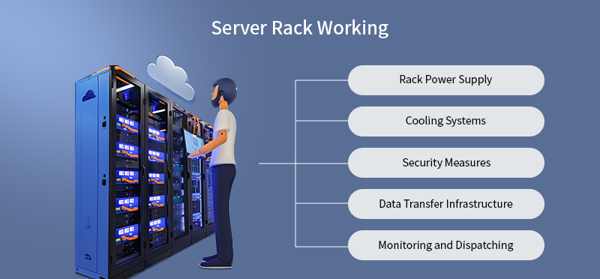
더 깊이 다이빙하십시오: 표준화 된 프레임 워크의 장점
장비 랙 사용의 주요 기능과 이점을 분류합시다.:
- 표준화 (EIA-310): 널리 채택 된 EIA-310 표준은 장비 패널의 19 인치 너비와 "U" 높이를위한 단위. 이를 통해 다른 제조업체의 장비는 일반적으로 모든 표준 랙에 맞을 수 있습니다., 상호 운용성과 선택 촉진.
- 공간 최적화: 랙을 사용하면 수직 공간을 엄청나게 효율적으로 활용할 수 있습니다. 방을 가로 질러 널리 퍼지는 귀중한 장비 대신, 깔끔하게 쌓여 있습니다, 최소 발자국에서 구성 요소 밀도를 최대화합니다. 이것은 데이터 센터에서 중요합니다, 옷장, 소형 에너지 저장 설정조차도.
- 조직 및 케이블 관리: 쌓인 환경이 권장됩니다 (종종 기능을 제공합니다) 체계적인 조직. 장비는 중앙 집중식입니다, 케이블 관리자와 같은 액세서리가 있습니다, 패치 패널, 사려 깊은 라우팅, 전원 및 데이터 케이블은 깔끔하게 유지할 수 있습니다, 라벨이 붙었습니다, 그리고 방해. 이것은 혼란을 크게 줄입니다, 공기 흐름을 향상시킵니다, 문제 해결을 단순화합니다.
- 공기 흐름 및 냉각 개선: 대부분의 랙 및 랙 장착 장비는 특정 공기 흐름 패턴을 위해 설계되었습니다. (종종 전선 또는 바닥에서 꼭대기). 적절한 랙킹은 이러한 경로가 유지되도록합니다, 민감한 전자 제품을 시원하게 유지하고 운영 수명을 연장하는 데 도움이됩니다.. 블랭킹 패널은 빈 U 공간을 덮기 위해 사용됩니다..
- 향상된 보안: 많은 랙은 단단하거나 천공 된 문과 측면 패널이있는 잠금 식 캐비닛으로 제공됩니다.. 이것은 물리적 보안을 제공합니다, 귀중한 서버에 대한 무단 액세스 방지, 네트워크 장비, UPS1. 단위, 또는 배터리 시스템.
- 확장 성 및 접근성: 필요에 따라, 일반적으로 사용 가능한 U 공간에 더 많은 장비를 추가하거나 더 많은 랙을 추가하는 것이 간단합니다.. 서버의 슬라이딩 레일 및 일부 UPS/배터리 장치와 같은 기능은 장비 후면에 쉽게 액세스 할 수 있습니다..
GYCX 태양열 설치에서 직접 보았습니다. 인버터를위한 잘 계획된 랙, 배터리 모듈, 모니터링 장비는 복잡한 시스템을 엄청나게 전문적으로 보이게하고 라인 아래로 서비스를 훨씬 쉽게 서비스 할 수 있습니다..
랙 마운트를 설정하는 방법?
자신의 장비 랙을 설정할 계획입니다, 아마도 홈 실험실의 경우, 소규모 비즈니스 IT 옷장, 또는 강력한 랙 마운트 배터리 시스템의 경우? 설정 프로세스에 대한 체계적인 접근 방식은 안전을 보장합니다., 안정, 모든 장비에 대한 최적의 성능.
랙 마운트를 설정하면 일반적으로 이러한 주요 단계가 포함됩니다.:
- 레이아웃 계획: 각 장비가 어디로 갈지 결정하십시오, 안정성을 위해 UPS 장치 및 대형 배터리와 같은 무거운 품목 배치.
- 랙을 고정시킵니다 (필요한 경우): 안전을 위해, 특히 무거운 짐으로, 랙을 바닥 및/또는 벽으로 단단히 볼트하십시오.
- 레일 키트 설치: 적절한 레일 키트를 부착하십시오 (고정 또는 슬라이딩) 랙의 수직 기둥에 각 장비에 대해.
- 장비 장비: 조심스럽게 장비를 레일에 밀거나 들어 올려 나사로 고정하십시오..
- 케이블 관리: 케이블 관리자 및 타이를 사용하여 깔끔하게 경로 전력 및 데이터 케이블.
- 적절한 공기 흐름과 전력 분배 보장: 빈 공간에 빈 패널을 설치하고 장치를 전원 분배 장치에 연결하십시오. (PDU) 필요한 경우.
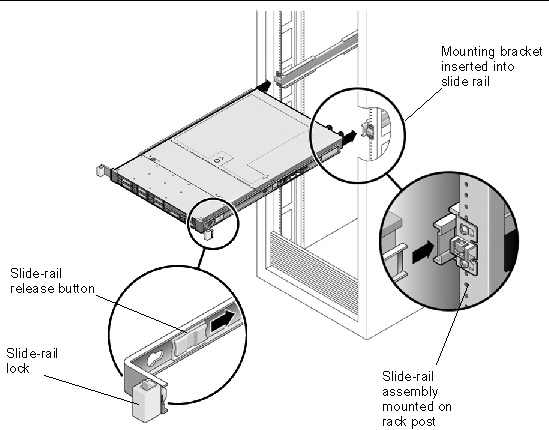
더 깊이 다이빙하십시오: 랙 설치에 대한 체계적인 접근법
이 설정 단계를 자세히 설명해 봅시다:
- 안전 제일 & 준비:
- 고정: 이전에 논의 된 바와 같이, 랙에 상당한 무게가 유지되는 경우 (여러 서버 랙 배터리 또는 UPS 장치와 유사합니다), 그것 ~ 해야 하다 팁을 방지하기 위해 바닥 및/또는 벽에 단단히 고정되어 있습니다.. 이것은 중요한 안전 조치입니다.
- 안전한 리프팅: 무거운 품목에 도움이됩니다. 적절한 리프팅 기술을 사용하십시오.
- 도구: 필요한 도구를 수집하십시오: 드라이버 세트, 케이지 너트 도구 (정사각형 구멍 랙을 사용하는 경우), 수준, 테이프 측정, 고정하는 경우 적절한 드릴 및 비트.
- 레이아웃 계획:
- 체중 분포: 항상 가장 무거운 구성 요소를 설치하십시오 (UPS, 큰 배터리, 밀도가 높은 서버) 랙의 바닥에. 이것은 무게의 중심을 낮 춥니 다.
- 공기 흐름 전략: 장비가 시원한 공기로 끌어 들이고 뜨거운 공기를 배출하는 방법을 이해하십시오.. 이를 최적화하려면 배치를 계획하십시오, 통풍구가 막히지 않도록합니다.
- 접근성: 가장 자주 액세스하는 데 필요한 구성 요소에 대해 생각해보십시오..
- 레일 키트 설치: 각 랙 장착 가능한 장비는 일반적으로 자체 레일 키트와 함께 제공되거나 특정 호환 옵션이 있습니다.. 이 레일을 랙의 수직 기둥에 설치하려는 제조업체의 지침을 정확하게 따르십시오.. 그들이 수평을 유지하고 올바른 깊이로 단단히 고정되도록하십시오..
- 장비 장비: 레일이 제자리에 있습니다, 장비를 조심스럽게 밀거나 랙으로 들어 올립니다. 무거운 품목의 경우, 이것은 종종 2 인 직업입니다. 한 번 자리에, 적절한 나사로 장비의 전면 패널을 랙 레일에 고정하십시오. (또는 케이지 너트와 나사).
- 케이블 관리: 이것은 깨끗한 설정과 우수한 공기 흐름에 중요합니다..
- 랙 장착 전력 분배 장치를 사용하십시오 (PDU) 전원 콘센트 용.
- 수직 및 수평 케이블 관리자를 사용하여 랙의 측면 또는 뒷면을 따라 깔끔하게 케이블을 경로, 벨크로 스트랩, 또는 지퍼 타이 (너무 빡빡하지 않습니다!).
- 간섭을 최소화하기 위해 가능한 경우 데이터 케이블에서 전원 케이블을 별도.
- 양쪽 끝에 레이블 케이블.
- 접지: 장비 랙 자체와 모든 장착 장치가 안전을위한 전기 코드에 따라 올바르게 접지되어 있는지 확인하십시오..
- 공기 흐름 최적화: 사용하지 않은 U 공간에 빈 패널을 설치하십시오. 이것은 뜨거운 배기 공기가 장비의 전면 공기 흡입으로 재순환되는 것을 방지합니다., 냉각 효율 향상.
시간을 내고 신중하게 계획하면 전문가가됩니다., 안전한, 관리하기 쉬운 랙 설정.
더 나은 벽 마운트 또는 서버 랙 배터리입니다?
리튬 배터리 에너지 저장을 배포 할 때, 특히 주거용 또는 가벼운 상업용 응용 프로그램의 경우, 종종 두 가지 주요 물리적 형태가 발생합니다: 매끄러운, 올인원 벽 마운트 배터리 더 산업적으로 보입니다 서버 랙 배터리 (그런 다음 일반적으로 캐비닛이나 랙에 보관됩니다.). 그래서, 어느 것이 "더 낫다" 당신을위한 선택?
보편적으로 "더 나은"것도 아닙니다.; 이상적인 선택은 특정 요구에 따라 다릅니다, 공간, 용량 요구 사항, 예산, 미적 취향과. 벽 마운트 배터리 (Tesla Powerwall 또는 Enphase engharge와 마찬가지로) 통합 설계 및 주거용 호소에 종종 선호됩니다., 미적으로 유쾌한 패키지로 특정 용량을 제공합니다. 서버 랙 배터리 우수한 모듈성을 제공하십시오, 랙 발자국 내 고 에너지 밀도, 더 크거나 더 많은 맞춤형 시스템을 구축하는 데 더 비용 효율적이고 유연합니다., 확장 성이 필요한 사람들에게 좋거나 기존 랙 인프라에 통합.
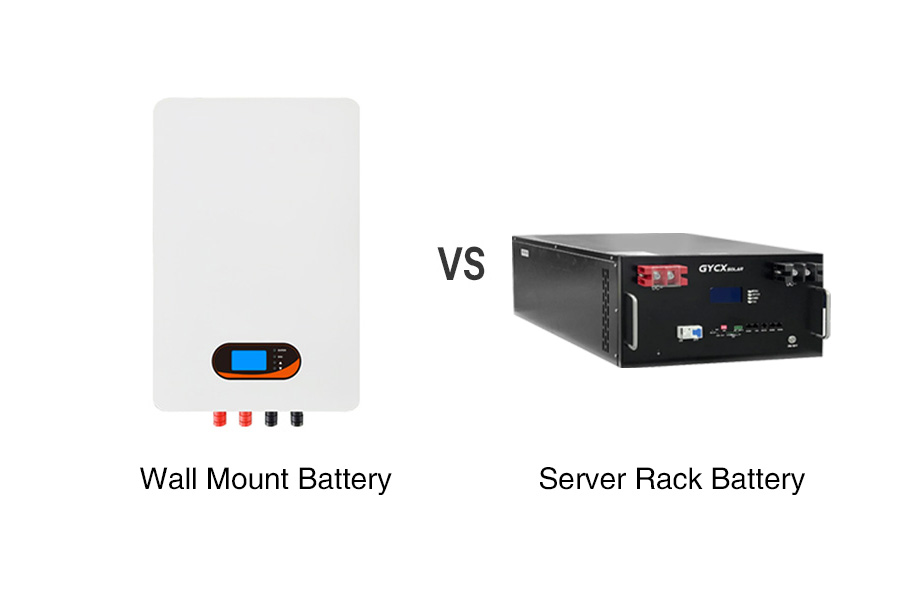
더 깊이 다이빙하십시오: 배터리 폼 팩터 옵션의 무게를 측정합니다
이 두 가지 인기있는 접근 방식을 배터리 저장소와 비교해 봅시다:
벽 마운트 배터리 시스템 (예를 들어, 테슬라 파워 월, enphase enhparch, 사운드 트랙, LG 에너지 솔루션 Resu Prime):
- 장점:
- 미학: 시각적으로 매력적으로 설계되었습니다, 종종 매끄러운, 차고에 설치에 적합한 현대식, 유틸리티 룸, 또는 때로는 더 눈에 띄는 가정 공간.
- 올인원 (자주): 많은 모델이 배터리를 통합합니다, 비엠에스, 때로는 단일 인클로저로의 하이브리드 인버터조차, 어떤면에서 설치를 단순화합니다.
- 브랜드 생태계: 이미 특정 제조업체의 태양열 또는 에너지 생태계에 투자 한 경우 완벽한 통합을 제공 할 수 있습니다..
- 특정 용량 포인트: 일반적으로 세트 용량으로 제공됩니다 (예를 들어, 5 kWh, 10 kWh, 13.5 단위당 kWh), 더 많은 스토리지를 위해 평행 할 수 있습니다.
- 단점:
- 확장성: 유닛을 병렬화 할 수 있습니다, 스케일링은 랙 모듈에 비해 특정 지점을 넘어 kWh 당 덜 세분화되거나 더 비쌀 수 있습니다..
- 독점적 성격: 일부 시스템은 가장 잘 작동하도록 설계 될 수 있습니다 (또는 만) 동일한 제조업체의 특정 인버터 또는 소프트웨어, 잠재적으로 미래의 유연성을 제한합니다.
- 비용: 때로는 kWh 당 더 높은 비용을 가질 수 있습니다, 특히 상당한 용량이 필요한 경우, 통합 디자인 및 브랜딩으로 인해.
- 수리 가능성: 올인원 단위의 한 구성 요소의 문제는 서비스에 더 복잡 할 수 있습니다..
서버 랙 배터리 시스템 (예를 들어, Pylontech의 LFP 모듈, EG4, 요새 힘, 그로와트, 등., 랙/캐비닛에 설치됩니다):
- 장점:
- 높은 모듈성 & 확장성: 더 많은 개인을 추가하여 용량을 확장하기가 매우 쉽습니다. (종종 ~ 5kwh) 병렬 모듈. 이것은 시스템 크기에 대한 매우 세분화 된 제어를 제공합니다.
- 더 큰 시스템의 비용 효율성: 더 큰 KWh 요구에, 여러 랙 모듈이있는 시스템을 구축하면 종종 kWh 당 더 비용 효율적 일 수 있습니다..
- 유연성 & 개방 상태: 많은 LFP 랙 배터리는 오픈 프로토콜을 사용하여 광범위한 타사 하이브리드 인버터와 통신하도록 설계되었습니다. (캔 버스 또는 RS485처럼), 더 많은 선택을 제공합니다.
- 고밀도: 표준 랙 발자국 내에서 우수한 에너지 저장 밀도.
- 서비스 가능성: 하나의 모듈에 문제가있는 경우, 전체 시스템을 오프라인으로 복용하지 않고 종종 분리되거나 교체 될 수 있습니다. (디자인에 따라).
- 단점:
- 미학/공간: 전용 랙 또는 캐비닛이 필요합니다, 일부 주택 소유자의 매끄러운 벽 유닛만큼 시각적으로 매력적이지 않을 수도 있고 바닥 공간을 차지합니다. (소형이지만).
- 구성 요소 통합: 너 (또는 설치 프로그램, GYCX Solar처럼) 배터리의 적절한 통합을 보장 할 책임이 있습니다, BMS 커뮤니케이션, 인버터, 필요한 인클로저 및 케이블 링, 많은 구성 요소가 쉬운 페어링을 위해 설계되었지만.
GYCX 태양 이야기: "우리는 종종 이것을 고객과 논의합니다. 부인을 위해. 존스, 그녀의 차고에서 깨끗한 표정과 약 10kWh의 백업을 원했습니다., 특정 벽 마운트 장치는 완벽했습니다. Mr. 첸, 태양열을 확장하려는 계획이있는 오프 그리드 워크숍을 가지고 있었고 성장할 공간이있는 30kWh+가 필요했습니다., 캐비닛에 확장 가능한 LFP 서버 랙 배터리로 제작 된 시스템은 최고의 장기 유연성과 가치를 제공했습니다..
솔루션을 필요와 일치시키는 것입니다."
랙 마운트 시스템 기능 - 표준화 방법 이해, 조직 및 공간 효율성과 같은 이점, 그리고 적절한 설정의 원칙 - 현대 IT 및 에너지 저장에서의 역할을 감상하는 데 핵심입니다.. 에너지 저장에 관해서는, 전용 벽 마운트 배터리와 다목적 서버 랙 배터리는 우수한 솔루션을 제공합니다..
Gycx Solar에서, 우리는 두 가지 접근 방식을 사용하여 강력한 에너지 저장 솔루션을 설계하고 설치할 수있는 전문 지식을 가지고 있습니다., 항상 금고를 보장합니다, 효율적인, 잘 조직 된 시스템. 랙 마운트 배터리를 탐색하거나 다른 스토리지 폼 요소를 비교하는 경우, 우리에게 연락하십시오. 우리는 귀하의 요구에 효과적으로 힘을 발휘할 수 있도록 도와드립니다.
UPS에 대해 배우십시오, 배터리 관련 용어, 리튬 배터리와 관련된 데이터 개념에 대한 더 나은 비교 이해를 위해. 이것은 당신의 요구에 더 잘 맞는 제품을 선택하는 데 도움이 될 것입니다.. ↩
